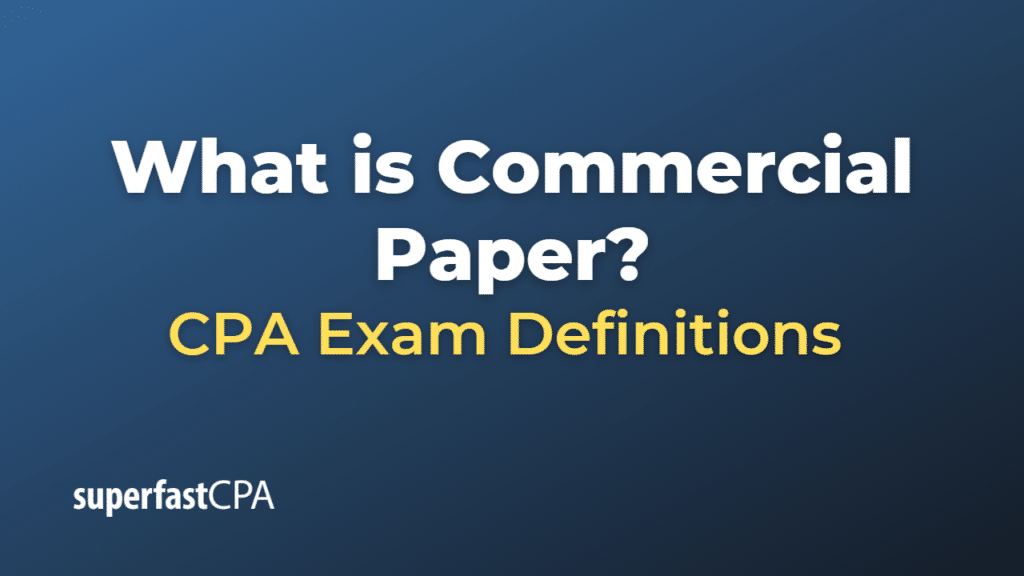Commercial Paper
Commercial paper is a short-term, unsecured debt instrument issued by corporations to raise funds for their short-term financing needs. It is typically issued with maturities ranging from a few days to 270 days, but most commonly between 30 and 90 days. Commercial paper is a form of promissory note, which means it represents a promise by the issuing corporation to pay a specific amount to the investor at maturity.
Corporations use commercial paper to cover immediate expenses such as payroll, accounts payable, or short-term debt obligations. Since commercial paper is unsecured, meaning it is not backed by collateral, it is generally issued by companies with strong credit ratings that are deemed to have a low risk of default. The interest rate on commercial paper is usually lower than the rates on other short-term borrowing options, such as bank loans, making it an attractive funding source for creditworthy corporations.
Investors in commercial paper include institutional investors, money market funds, and other entities seeking short-term investments with relatively low risk. Commercial paper is typically sold at a discount to its face value, with the difference between the purchase price and face value representing the interest earned by the investor.
Commercial paper can be an important component of the money market, as it provides a flexible and cost-effective source of short-term financing for corporations, while offering a relatively low-risk investment option for investors seeking short-term, liquid assets. However, the commercial paper market can be sensitive to changes in interest rates, economic conditions, and the creditworthiness of issuing corporations, which may impact the availability and cost of commercial paper financing.
Example of Commercial Paper
Let’s consider a hypothetical example to illustrate the concept of commercial paper.
Suppose there is a large, well-established company called XYZ Corporation that has a strong credit rating. XYZ Corporation is in need of short-term funding to cover its accounts payable and other operational expenses over the next two months. Instead of taking out a short-term bank loan or drawing on a line of credit, XYZ Corporation decides to issue commercial paper to raise the required funds.
XYZ Corporation issues $10 million worth of commercial paper with a 60-day maturity. The commercial paper is sold at a discount, meaning investors purchase the notes for a lower price than the face value. Let’s assume the commercial paper is issued at a 1% discount, which means investors pay $9,900,000 for the notes ($10,000,000 face value – 1% discount).
Institutional investors, such as money market funds and pension funds, purchase the commercial paper as a short-term investment. When the commercial paper matures in 60 days, XYZ Corporation repays the investors the full face value of $10 million. The investors earn a return on their investment from the difference between the purchase price and the face value, which, in this case, is $100,000 or 1% of the face value.
This example demonstrates how commercial paper can be an efficient way for creditworthy corporations to raise short-term funds while providing a relatively low-risk investment opportunity for institutional investors.













